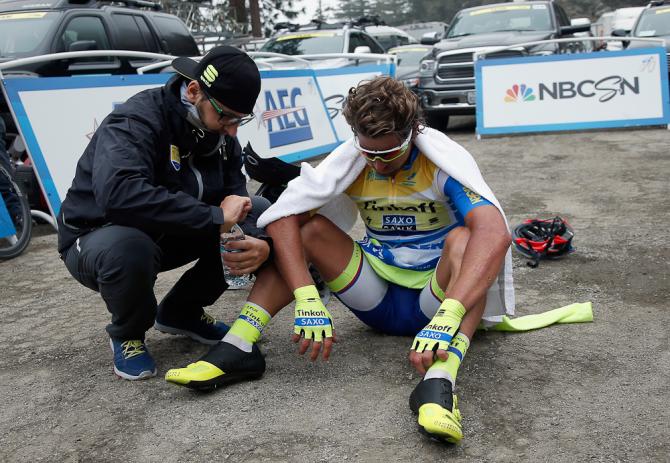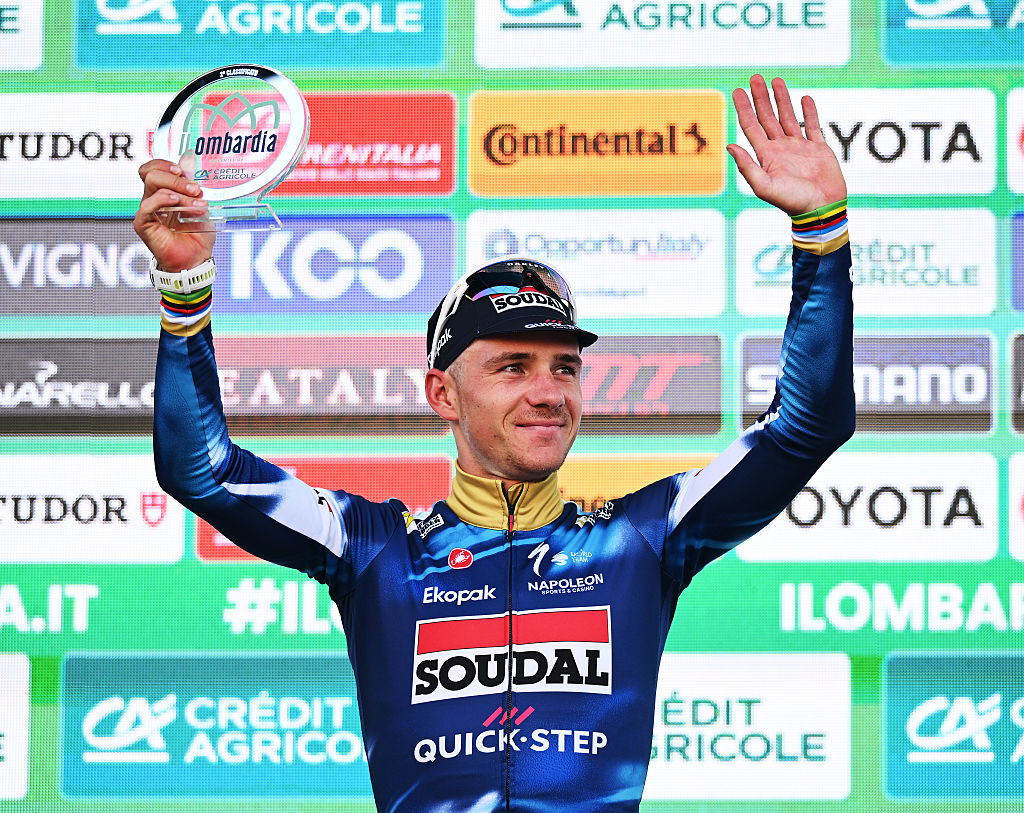California pros give thumbs up for Mt. Baldy finish
Tour of California unveils 2017 route with uphill finishes in San Jose and atop Mt. Baldy
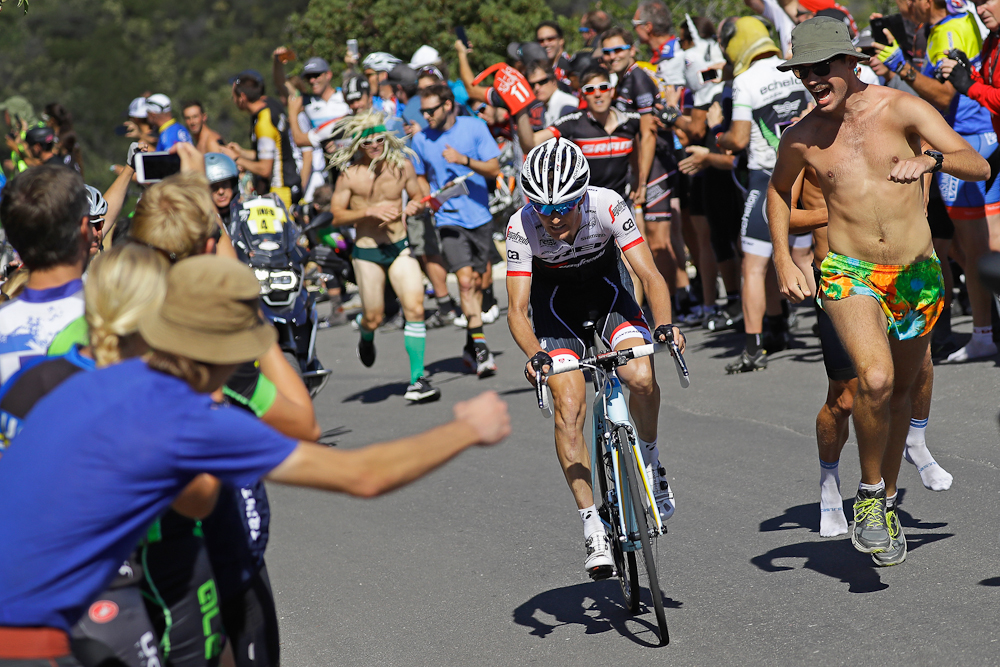
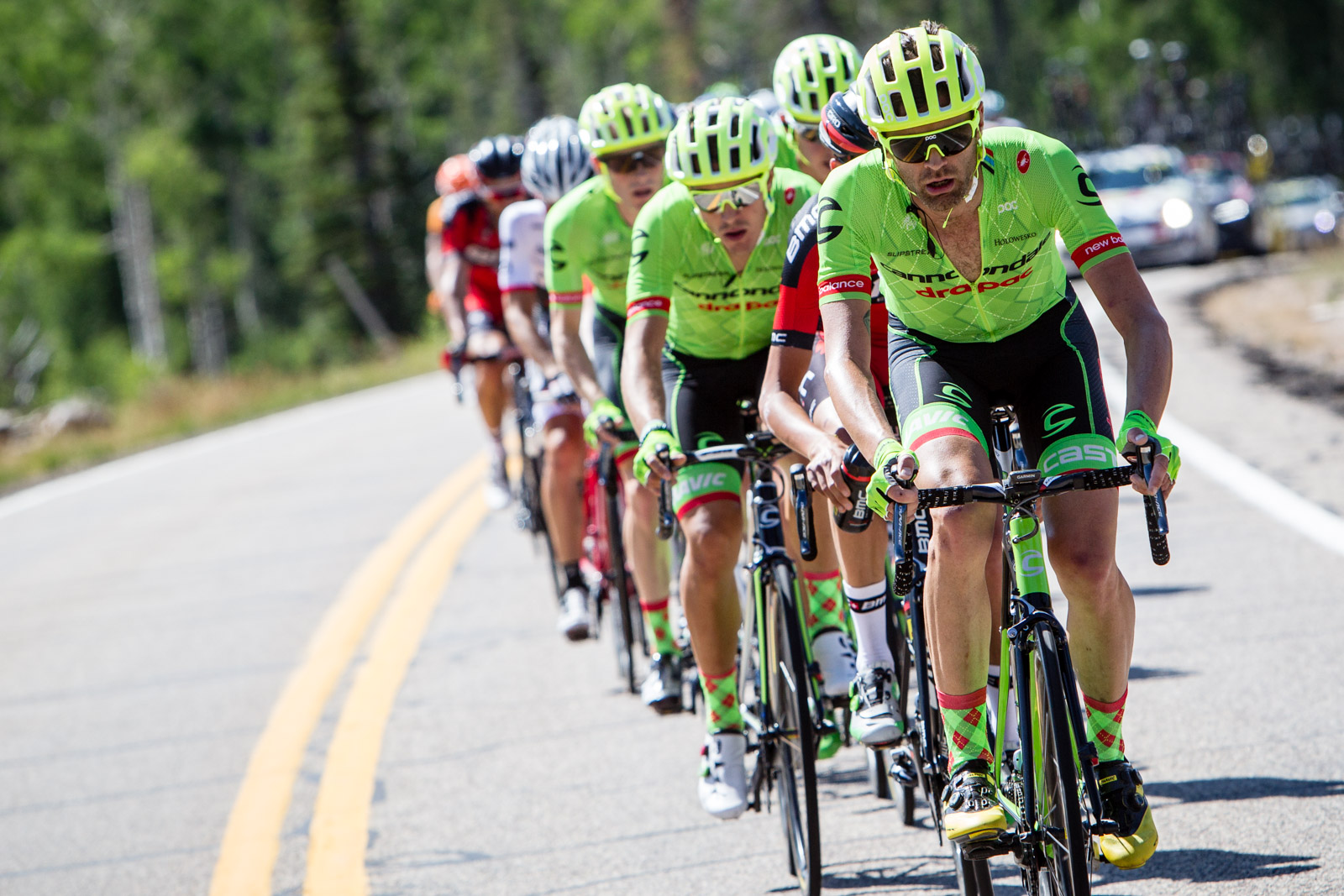
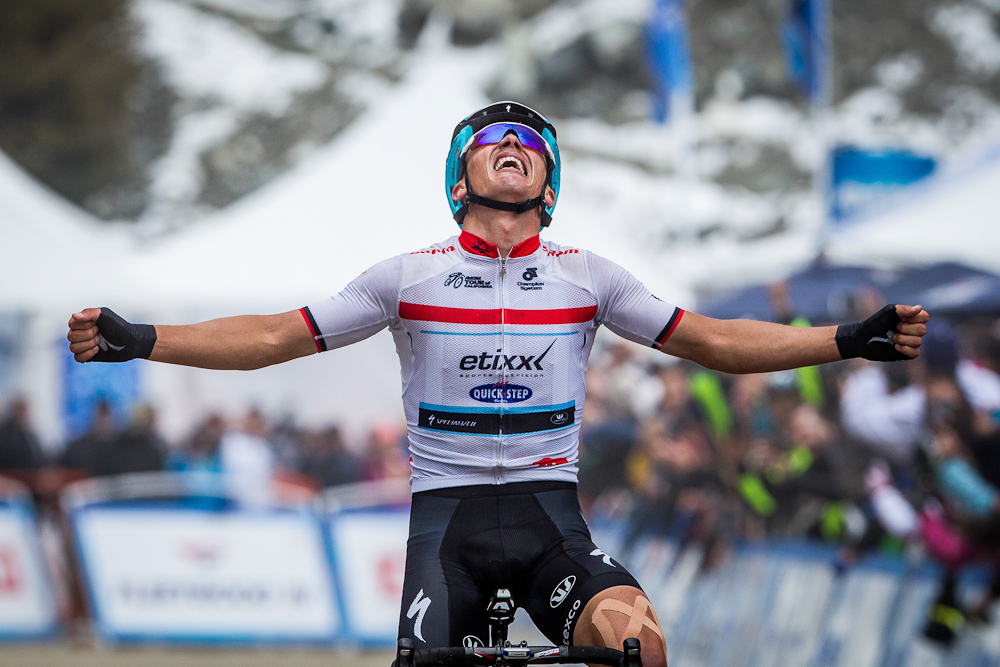
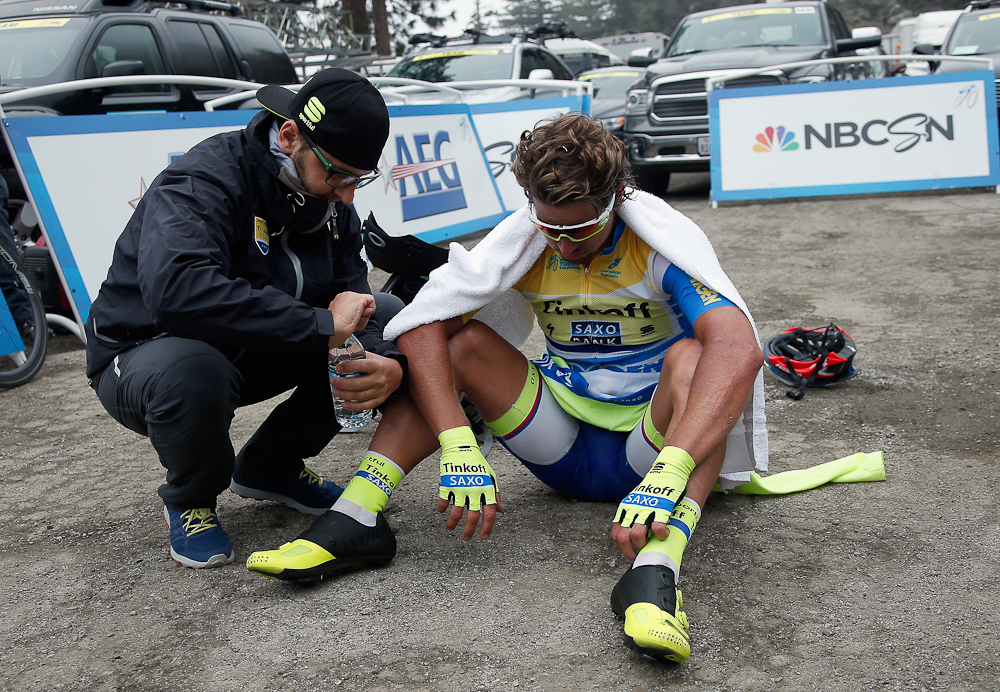
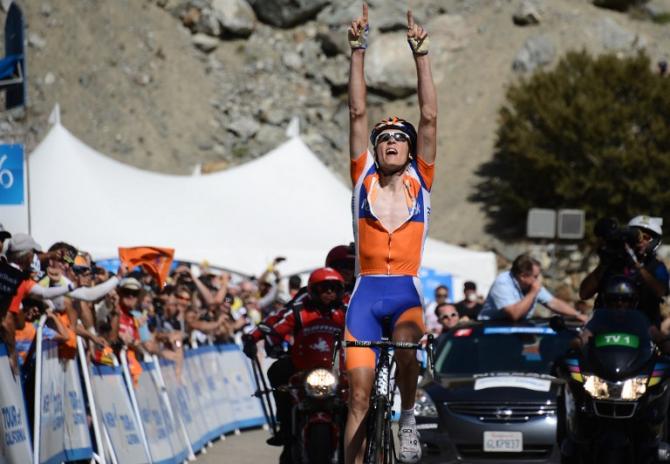
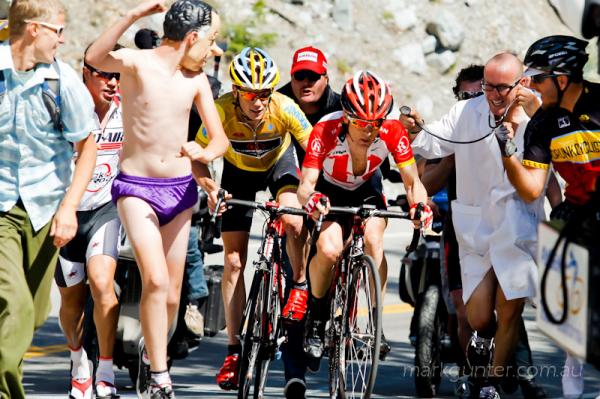
The Amgen Tour of California, which is down from eight stages to seven for 2017, squeezes two of the most decisive general classification stages into the closing days next year, with the Queen stage to Mt. Baldy and the individual time trial in Big Bear Lake coming back to back on stages 5 and 6.
The 2017 route appears likely to avoid this year's result, when eventual winner Julian Alaphalippe (Etixx-QuickStep) seized the general classification lead at the top of Gibraltar Road during stage 3 and was never really threatened over the following five stages.
Organisers stacked an individual time trial and difficult Santa Rosa-based circuit between Gibraltar and the finish last year, but the Folsom time trial and California's coastal climbs didn't prove enough to unseat the young Frenchman's nearly week-long grasp on yellow.
Alaphilippe came into the Santa Rosa stage on the penultimate day with 16 seconds over Rohan Dennis (BMC Racing), 38 seconds over Brent Bookwalter (BMC Racing) and 47 seconds over Andrew Talansky (Cannondale-Drapac). Despite a stage that included six categorised climbs, including Kings Ridge and Coleman Valley, none of Alaphilippe's GC rivals was able to pull back any time.
Trek-Segafredo's Peter Stetina, a Santa Rosa resident who started the day 2:02 behind Alaphilippe, said the route that day provided for some chaotic and unpredictable racing that ranks among the favourite for may riders, but in the end the climbs were too far away from the finish to change the GC. As the bunch emerged from the dense forested climbs above the Pacific Ocean, Peter Sagan slipped away with one climb remaining and was caught on the flat run to the finish, where Alexander Kristoff (Katusha) won the bunch sprint.
"Those are totally different from typical US races on big highways," Stetina recalled. "We were on single-lane roads with no yellow line down the middle, and it's bumpy and twisting up and down all day. It's ridiculous. That was a lot of racers' favourite day of the year because there was so much mayhem and it was so scrappy from the gun. It was real racing.
"Groups were forming and reforming again and again and again," he said. "It was crazy. It was very hard to control, and then you crest out on the Pacific. Unfortunately, everyone kind of blew their loads early, so by the time we even got to Coleman Valley and the final coming in, everyone was too tired to attack or do anything. It was just about bringing Sagan back at that point."
The latest race content, interviews, features, reviews and expert buying guides, direct to your inbox!
Like this year, the first GC selection of the 2017 race will likely come early in the week on the second day from Modesto to San Jose, where organizers are promising an uphill finish. The Mt. Baldy stage at the end of the week is almost certain to prove more decisive than the Santa Rosa loop was this year, however. The summit finish on Baldy will make all the difference, but as California resident and recently retired pro Phil Gaimon says, Baldy is special because of the roads that organisers usually use to get there.
"I always think of the mountaintop finishes as the Queen stage, but one thing that makes Baldy harder is the climb before it and then the hour on Glendora Mountain Road," Gaimon said. "You're just kind of rolling and ripping, and if you're not top five you're hating life. With Gibraltar, everyone went into it fresh and it was a race to the top of the mountain. With Baldy, you went into it and everyone was f*cked."
The last race up Mt. Baldy at the Tour of California took place in 2015 on the penultimate day before the finish in Pasadena. Peter Sagan lost the race lead that day to stage winner Alaphilippe, but the Tinkoff rider put in a massive effort to limit his losses on the stage to finish sixth, just 47 seconds behind the stage winner. Sagan trailed Alaphilippe by two seconds going into the final stage, where he took third in the final sprint to unseat the QuickStep rider and seal the overall win in a dramatic finale.
Peter Sagan recovers from his effort Mt. Baldy in 2015. (Getty Images)
A 'perfect' day on Mt. Baldy
Gaimon described the 2015 Mt. Baldy stage as a "perfect day" of bike racing.
"The front group was 40 guys at the bottom, and it just went nuts on Glendora Mountain Road with Team Sky trying to kill everybody," he said. "That was pretty nasty. And then on Baldy it had snowed, so there was snow on the ground, but it wasn't on the road, so it was safe and the fans were up there bundled up and cold and being morons. But having snow on the side was kind of refreshing. As you were getting destroyed you were being cooled down."
Before 2015, Mt. Baldy was last used in 2012, and it once again proved decisive for the overall when eventual race winner Robert Gesink won the stage and took the lead on the penultimate day.
Stetina said Mt. Baldy was a "climber's climb," although he's only ever ridden the road in training.
"I ended up doing the Giro three years in a row so I never actually raced Baldy,” he said. “I got a preview because I was planning on riding it one year. Big Bear wasn't very hard. I've done Diablo, which is nice because it towers over the Bay Area. But it's more of a time trialists climb, so it wasn't as decisive as you'd think. We still had 25 guys rolling into that final 300-metre wall. So you ended up fighting for seconds even though it was a cool climb.
"It all depends on how they race it," Stetina said of Mt. Baldy. "It's so steep for so long. Maybe if they came up all the way from the bottom instead of on Glendora Ridge that could make it even harder, I don't know."
Gaimon seemed to think the climb was plenty hard the way the race has been doing it, however, saying with a laugh that the climb will blow the race apart because "people are faster than each other."
"Baldy always makes for a good show, like anything late in the race," he said. "I thought Gibraltar was great, too. But it's variety and it's where the fans are going to line up. It's close to a city; it will get all the L.A. people coming out. So there are good, crazy crowds and a nice party up there."
Now that he's announced his retirement, Gaimon may have to join the fans "being morons" alongside the road if he wants to take part. Stetina, on the other hand, is hoping to get another shot at the event he now considers his home race.
"I hope I'll be there next year," he said. "It all kind of depends on what the team wants with the Giro. California is kind of my big thing. That's the one I go for, and especially with it being WorldTour next year, I would really like to showcase it and continue to make that my personal goal for the year.
"But I don't know what the team is planning with [Bauke] Mollema and Alberta [Contador], so I maybe Bauke does the Giro now or they both do the Tour. It's a beautiful course this year, the Giro, and I would be all about it if it didn't conflict with California. We'll see what the team brass has to say."
Growing up in Missoula, Montana, Pat competed in his first bike race in 1985 at Flathead Lake. He studied English and journalism at the University of Oregon and has covered North American cycling extensively since 2009, as well as racing and teams in Europe and South America. Pat currently lives in the US outside of Portland, Oregon, with his imaginary dog Rusty.
